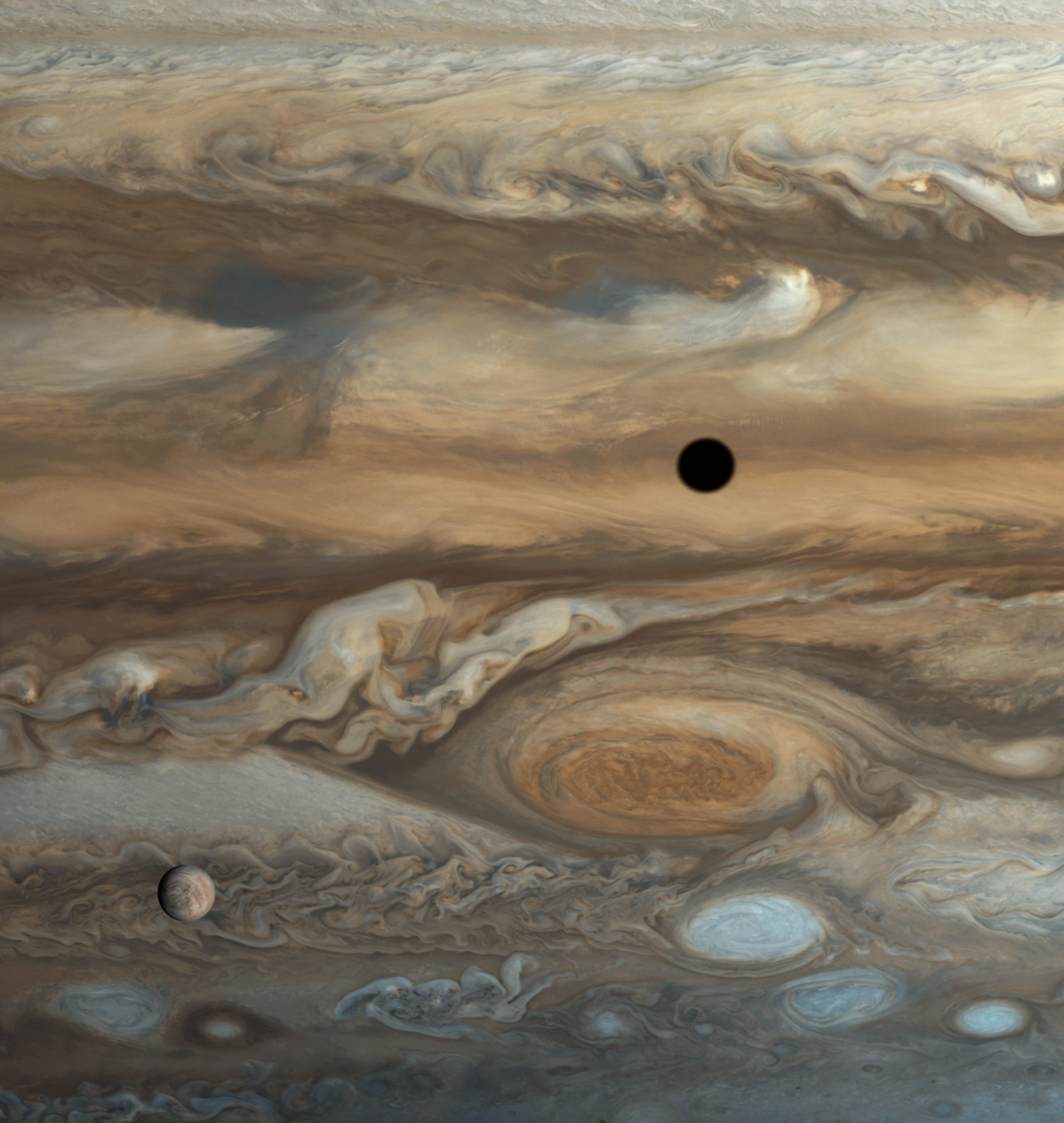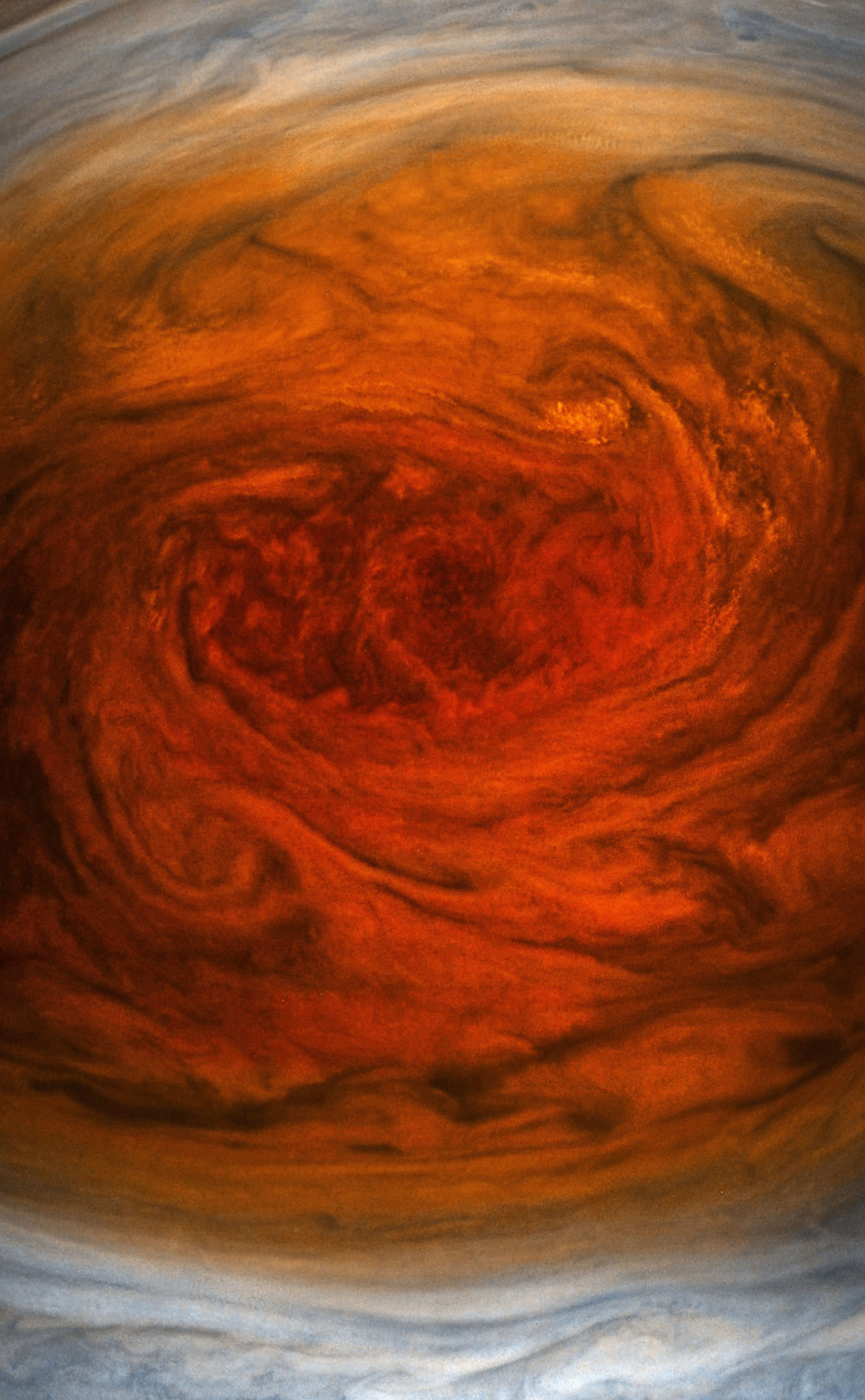Rae Paoletta • Oct 07, 2021
The shape of Jupiter’s Great Red Spot is changing. Here’s why.
Our solar system’s most iconic storm is indubitably great, red, and spot-like. But exactly why it’s any of those things is a mystery that continues to evolve and multiply.
A new study published in the journal Geophysical Research Letters adds yet another piece to Jupiter’s puzzling Great Red Spot: The winds in its outermost stretches are speeding up and its shape is changing, becoming less cigar-like and more circular.
Does this mean the Great Red Spot is doomed to disappear? Not exactly. But some of the scientists involved in this latest research said they weren’t expecting what they found — and a concrete explanation is proving elusive.
“Nobody had predicted what was actually going on,” said the study’s co-author, Mike Wong, an astronomer at UC Berkeley. “When we found what we did, we struggled to explain it.”
It’s impossible to predict the fate of the Great Red Spot. Even with our most powerful telescopes, we can’t peer deep into the storm and find its roots, and no spacecraft sent to Jupiter has been equipped to fully answer this question. Despite the gaps in our knowledge, we can try to understand what the storm’s past and present say about its uncertain future.

What is the Great Red Spot?
The Great Red Spot is a high-pressure system located in Jupiter’s southern hemisphere. It’s a powerful anticyclone, swirling counterclockwise around the center. And because of its shape and structure, the Great Red Spot is sometimes described as a “pancake.” It’s a charming — if somewhat deceiving — descriptor for a storm that rages at about 430 to 680 kilometers per hour (270 to 425 miles per hour).
Scientists have been tracking the Great Red Spot for about 150 years, but no one knows exactly when or how it formed; it might be much older than the earliest records indicate. Though the Spot has since become known for its ferocity — even feeding on smaller Jovian storms — the size of its bite may be changing.
“In the Voyager era, you could fit about three Earth across the Great Red Spot, but it’s been steadily shrinking and is now just bigger than the Earth,” said the paper’s co-author Amy Simon, a planetary scientist at NASA Goddard.
Like all storms, the Great Red Spot is dynamic. Its constitution is always in flux, sometimes just slightly. Simon and Wong observed some of these changes in their latest paper: as the storm contracts, there’s evidence to suggest it’s getting “taller” rather than wider. It’s unclear how long the Great Red Spot will continue on this course, or how long it will continue at all.
Why is the Great Red Spot red?
While we have some ideas, the truth is literally and figuratively hazy.
“We don’t know what chemical compounds make it red,” Simon said. “But because the Spot is covered with high dense haze or clouds, we think that some photochemical products like smog are involved.”
There are some compelling — and conflicting — explanations for the Great Red Spot’s signature hue. Some scientists think the red color comes from chemicals burrowed deep beneath the storm’s cloud tops. But other researchers say the rusty color comes from sunlight splitting up various chemicals in the storm’s upper atmosphere, which would mean the rest of the Great Red Spot is actually not very red at all. We might just see the “sunburn” at the top.
How are the Great Red Spot’s winds changing?
In a word: unevenly.
Back in 2019, amateur astronomers noticed pieces of the Great Red Spot “flaking” off the main body of the storm. The phenomenon led some scientists to question whether the Great Red Spot was disintegrating.
At that point, Simon, Wong and their team had already been combing through Hubble Telescope data from 2009 to 2020. The researchers studied the Great Red Spot’s velocity fields before and after the “flaking” observed in 2019; after much statistical testing, they confirmed that winds in the storm’s “outermost lane” or “high-speed ring” had increased by about 8%. Around the storm center, however, winds moved much more languidly.
“When we first looked at the GRS shrinking, we somewhat expected to see the winds increase, conserving angular momentum, like a figure skater pulling in her arms,” Simon said. “But that’s not what we measured. What we are seeing now is that both stretching and spinning faster happen, though we can’t yet say how continuous either trend is, or if this is part of the GRS eventually disappearing.”
It’s important to note that these developments, though surprising, are actually pretty small. According to Wong, the team was only able to spot the shifts in wind speed because they were looking at a relatively large time window.
“If you had a couple of observations a couple of years apart you wouldn’t see it,” Wong said. “It’s only by looking over an 11-year period that you can see the change.”

What is causing the winds of the Great Red Spot to speed up and slow down?
There doesn’t seem to be an easy way to explain this — at least not with the tools at our disposal right now. Hubble can’t see much of what’s going on beneath the Great Red Spot’s cloud tops, so our understanding of how the storm functions is very limited.
Measuring the depth of the GRS would provide some context, but even our best estimates from spacecraft are ambiguous; in 2017 NASA’s Juno found that the Spot is “50 to 100 times deeper than Earth's oceans,” but we still don’t know exactly where the storm ends.
Is the Great Red Spot going to disappear forever?
At this point it’s anyone’s guess.
Part of the challenge is that the Great Red Spot is, in a way, peerless — there’s not much in our solar system to compare it to. That said, Simon and Wong’s team found some similarities between the dynamics of the storm and mid-Atlantic eddies, which will hopefully provide leads for future research.
There’s also the question of what could come next, should the Great Red Spot vanish. If it really does disintegrate, could another like it form?
“Absolutely,” Simon said. “Jupiter has lots of stable storms, though none as large as the Great Red Spot.”
No one knows how much time Jupiter’s most memorable storm has left — it could be decades or centuries. But the end of Great Red Spot, whenever that might be, could signal the beginning of something else. Like its storms, Jupiter is perpetually unpredictable; its chemistry creates chaotic beauty randomly yet routinely.
With the Great Red Spot, time may very well be a flat circle, or in this case, a pancake.
Support our core enterprises
Your support powers our mission to explore worlds, find life, and defend Earth. You make all the difference when you make a gift. Give today!
Donate

 Explore Worlds
Explore Worlds Find Life
Find Life Defend Earth
Defend Earth

